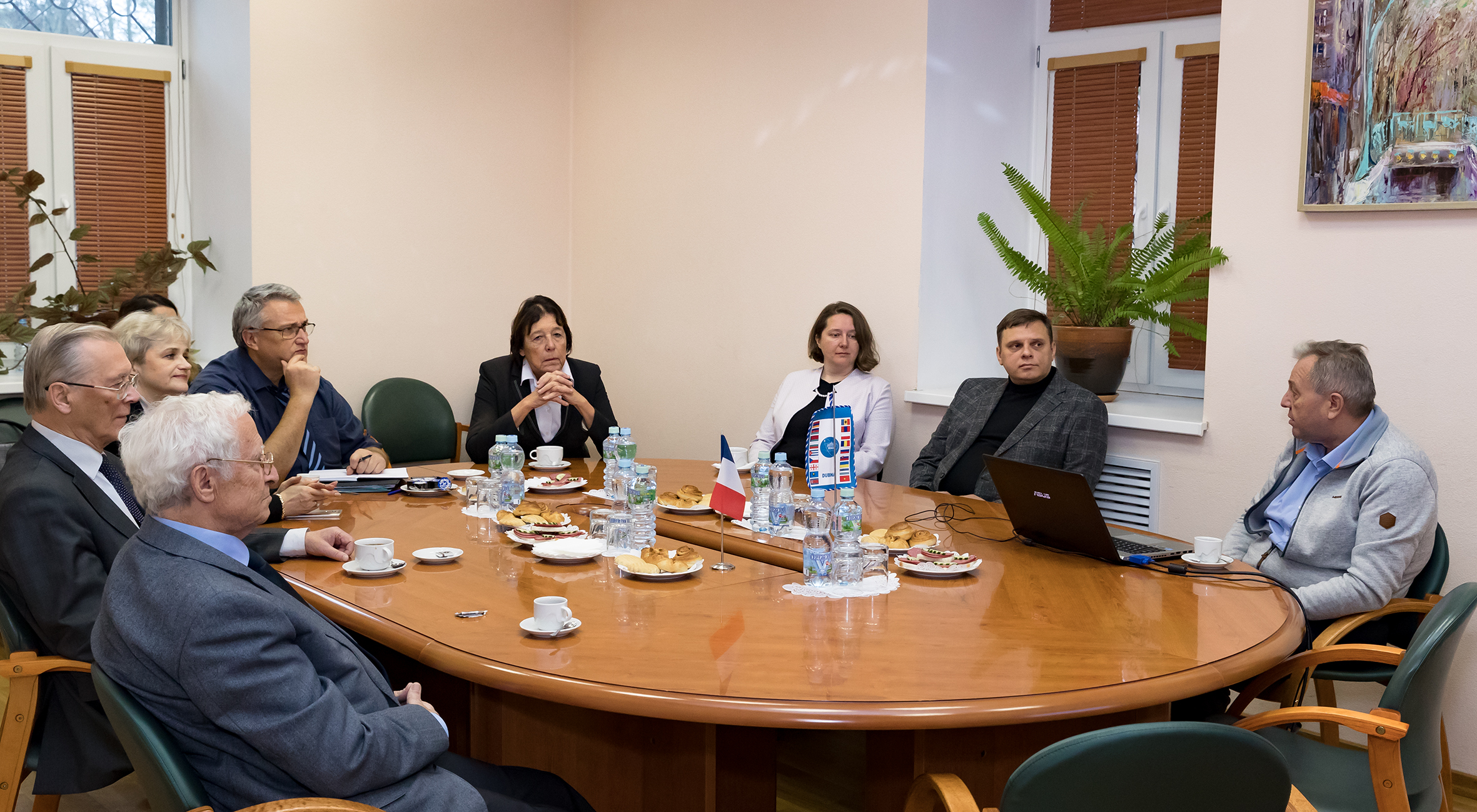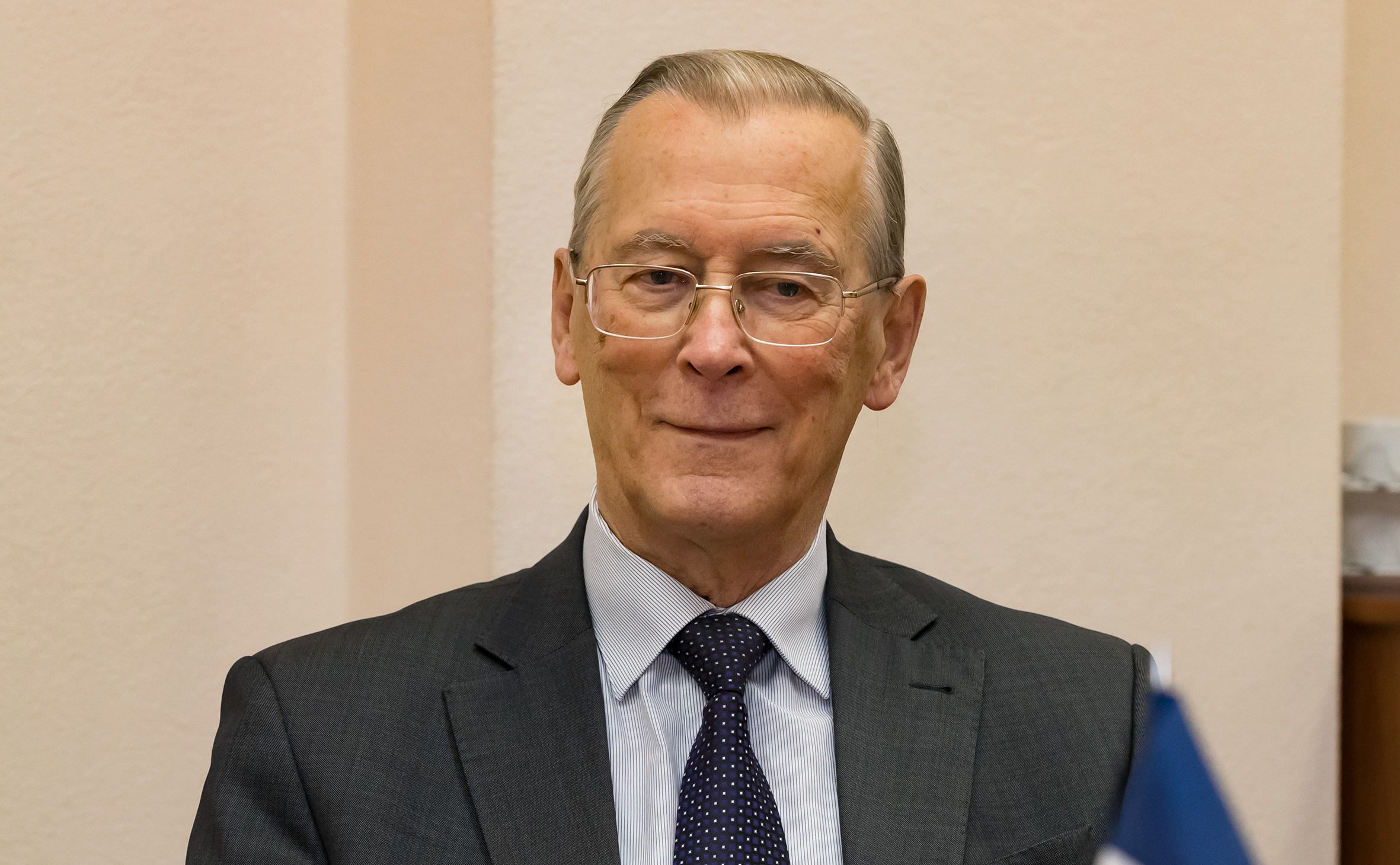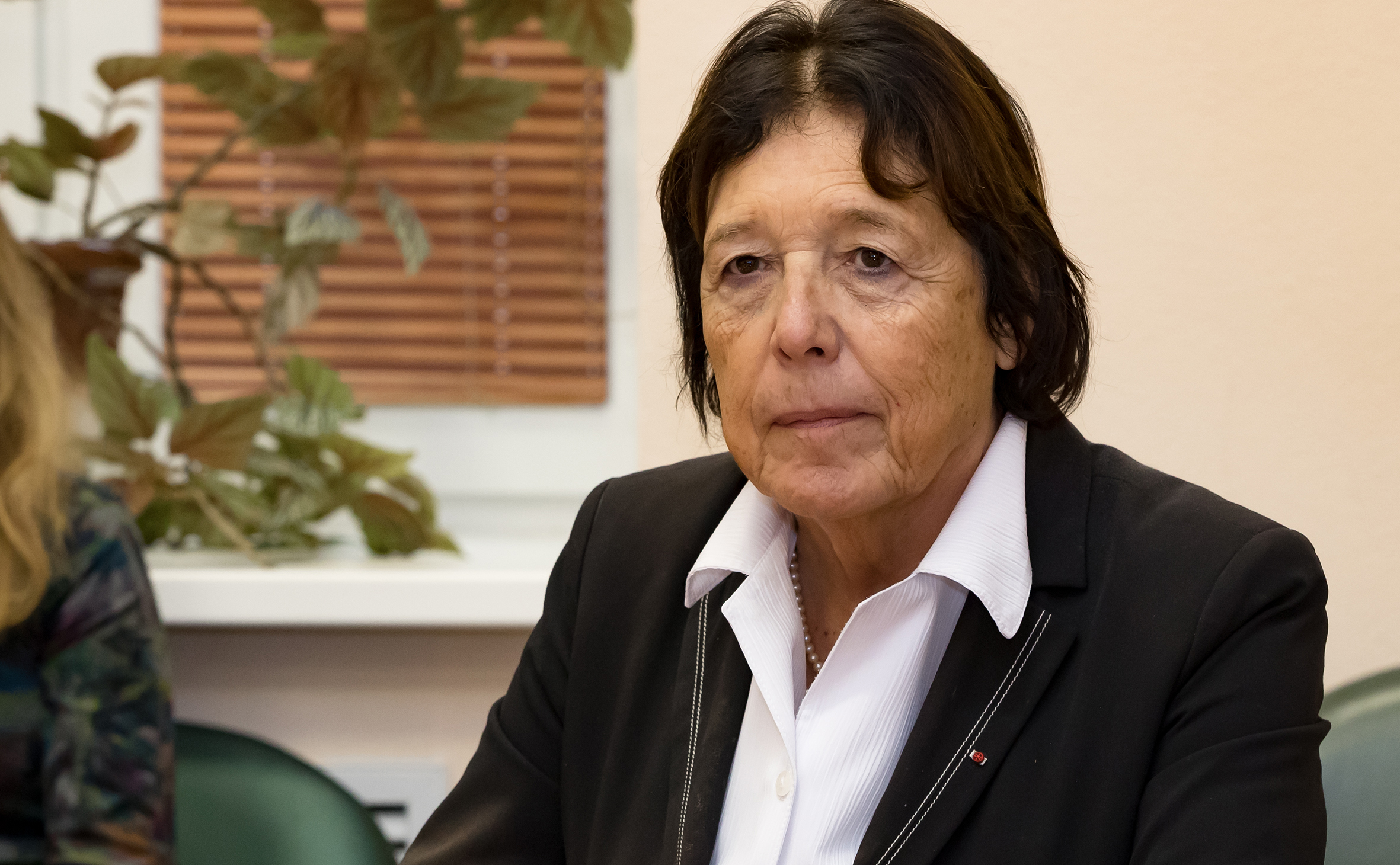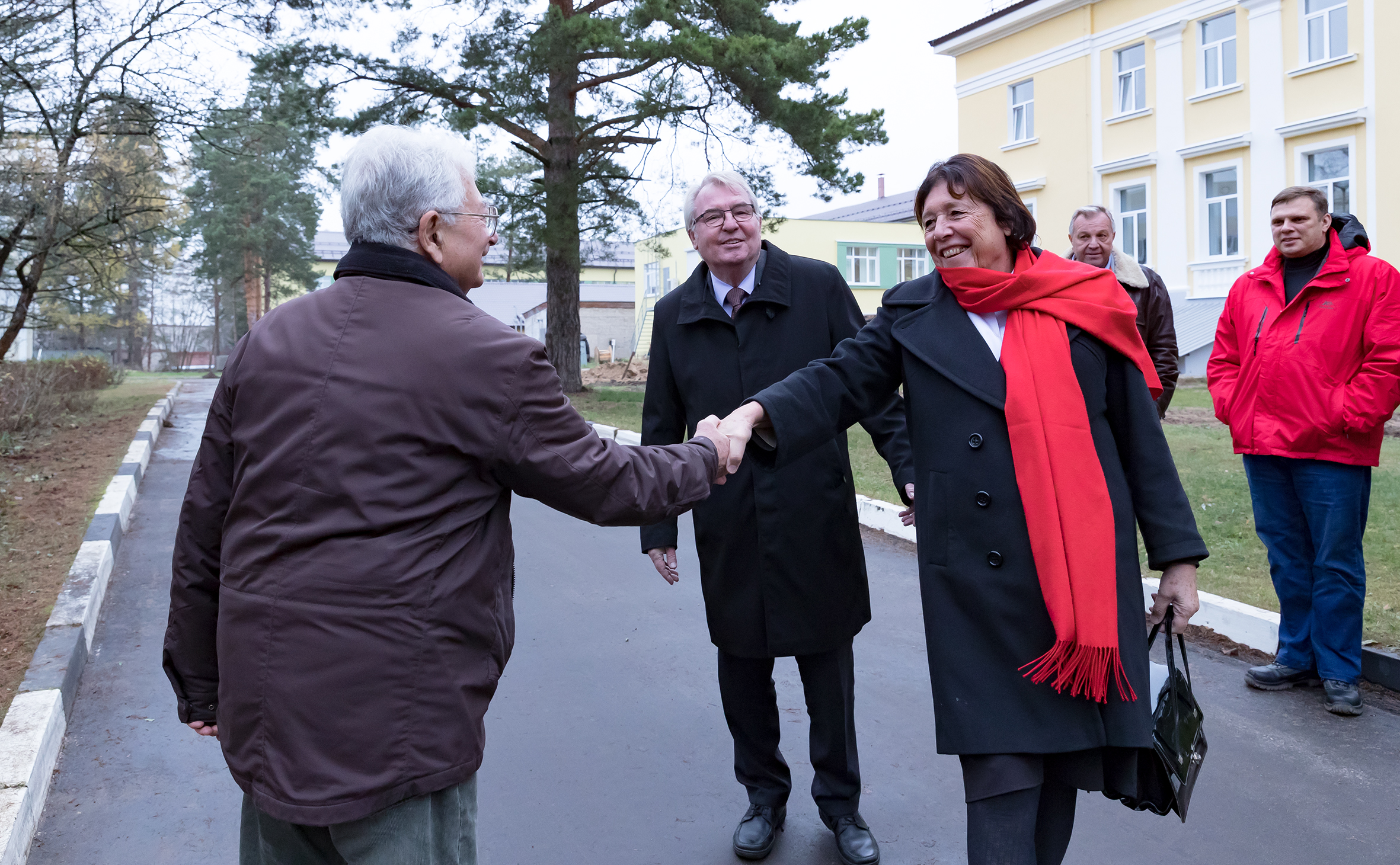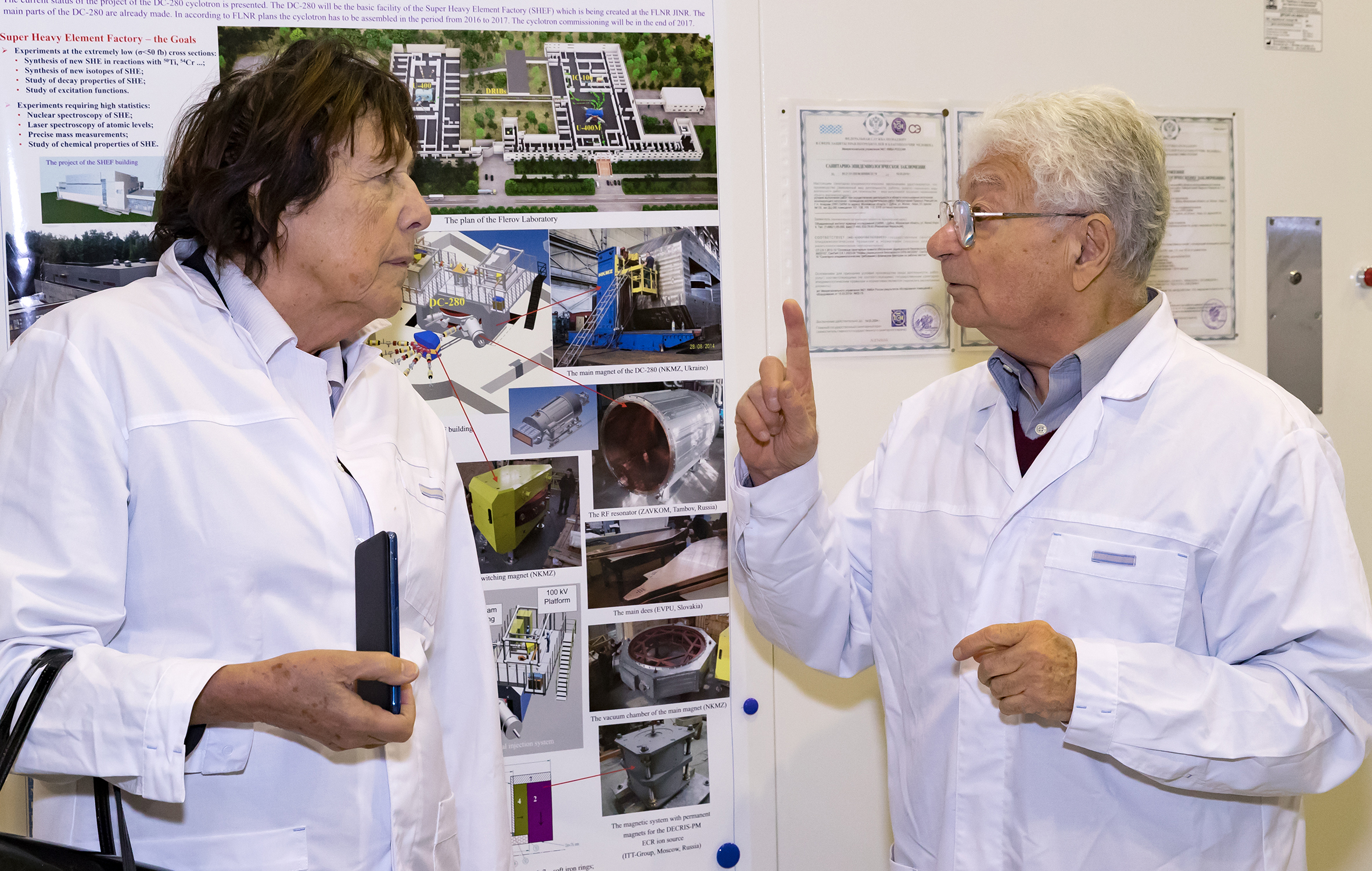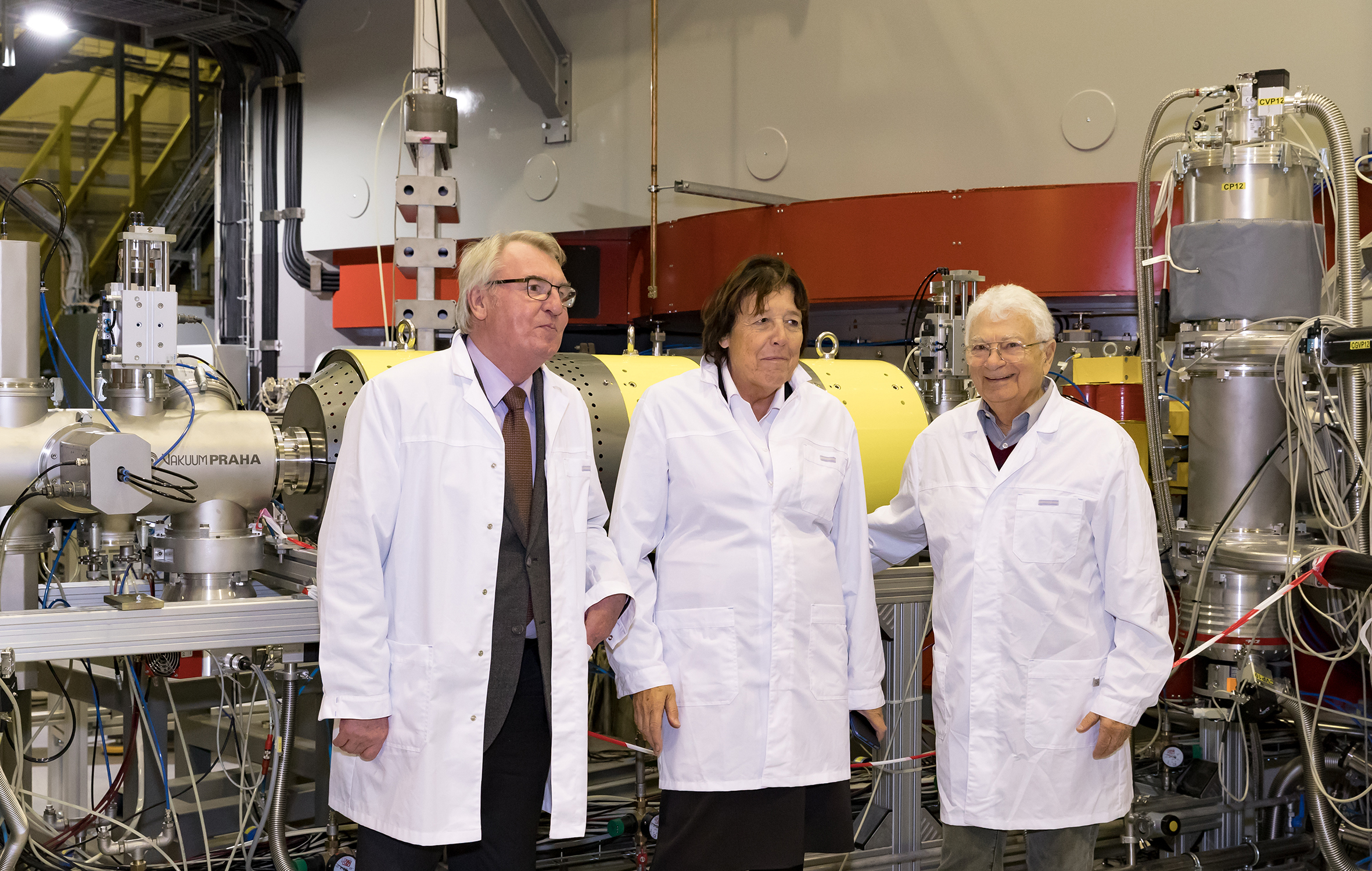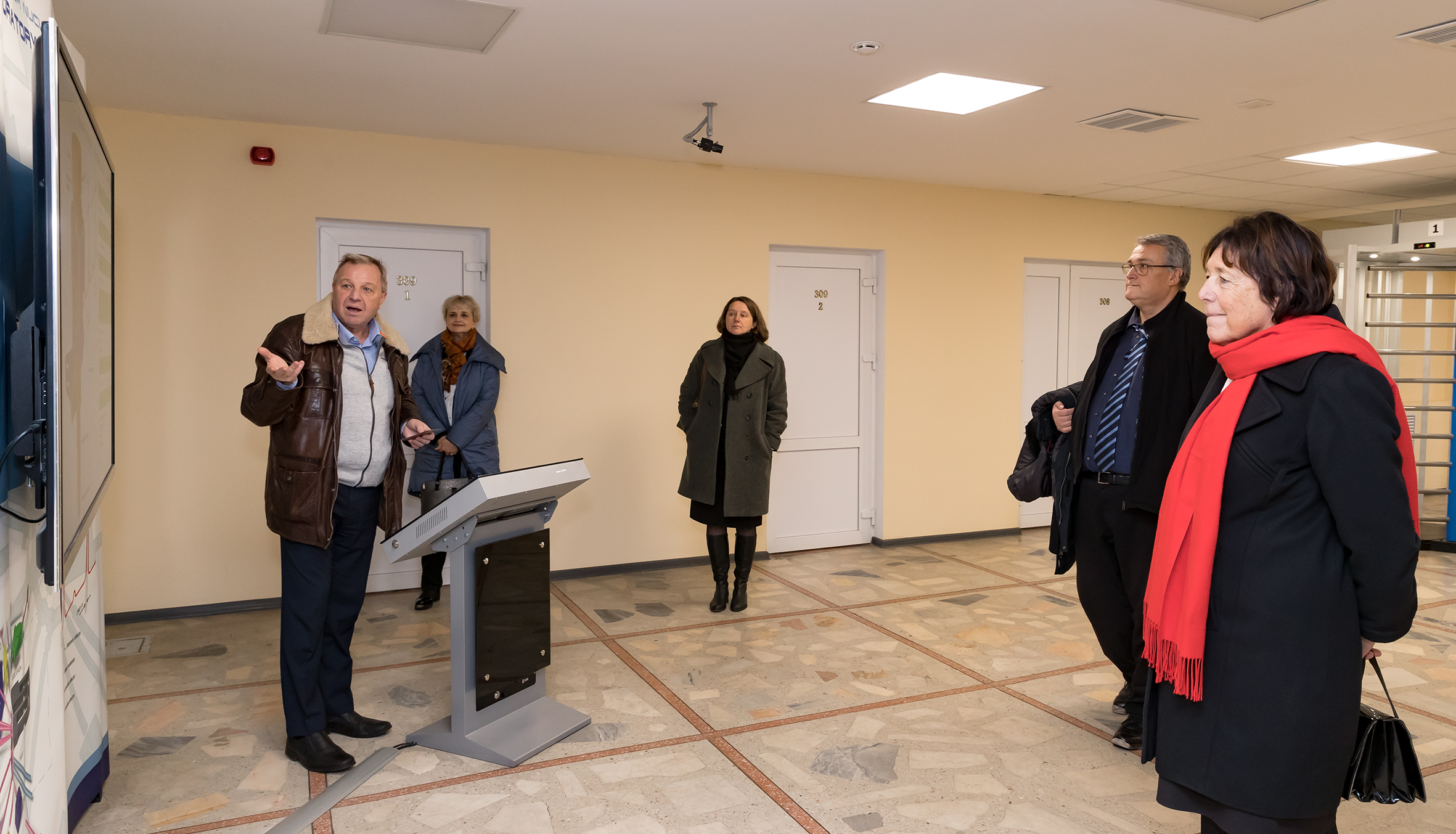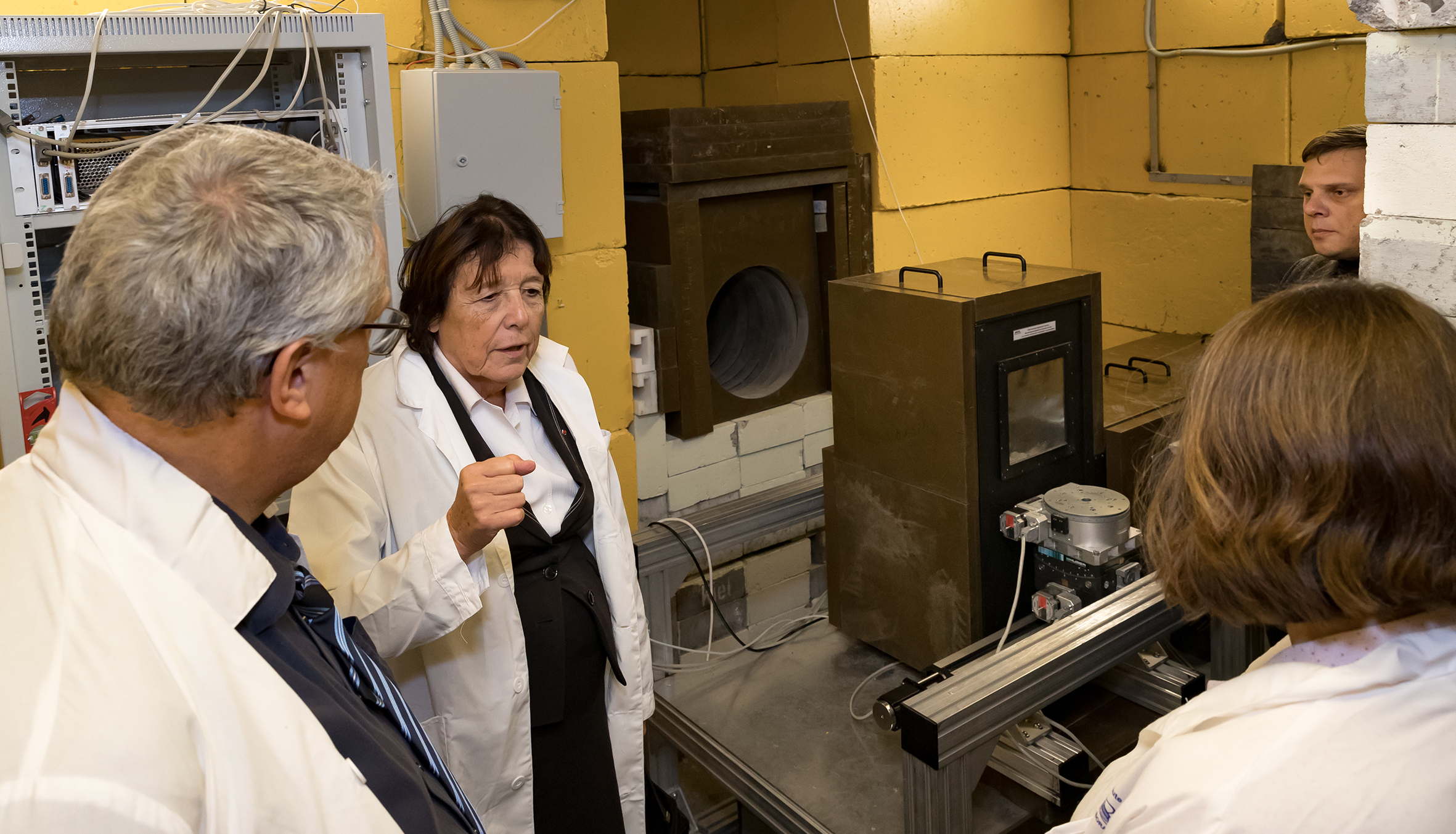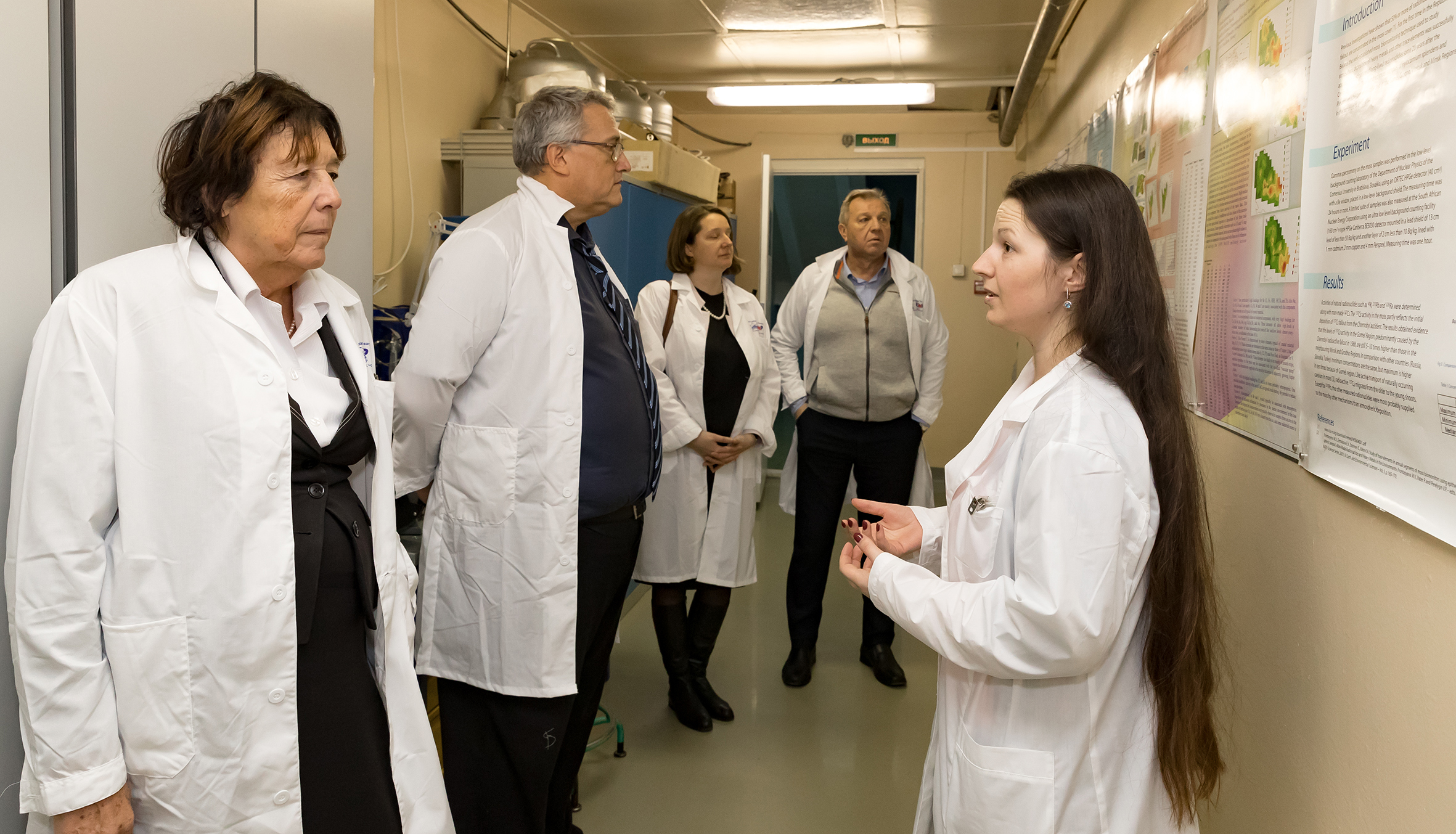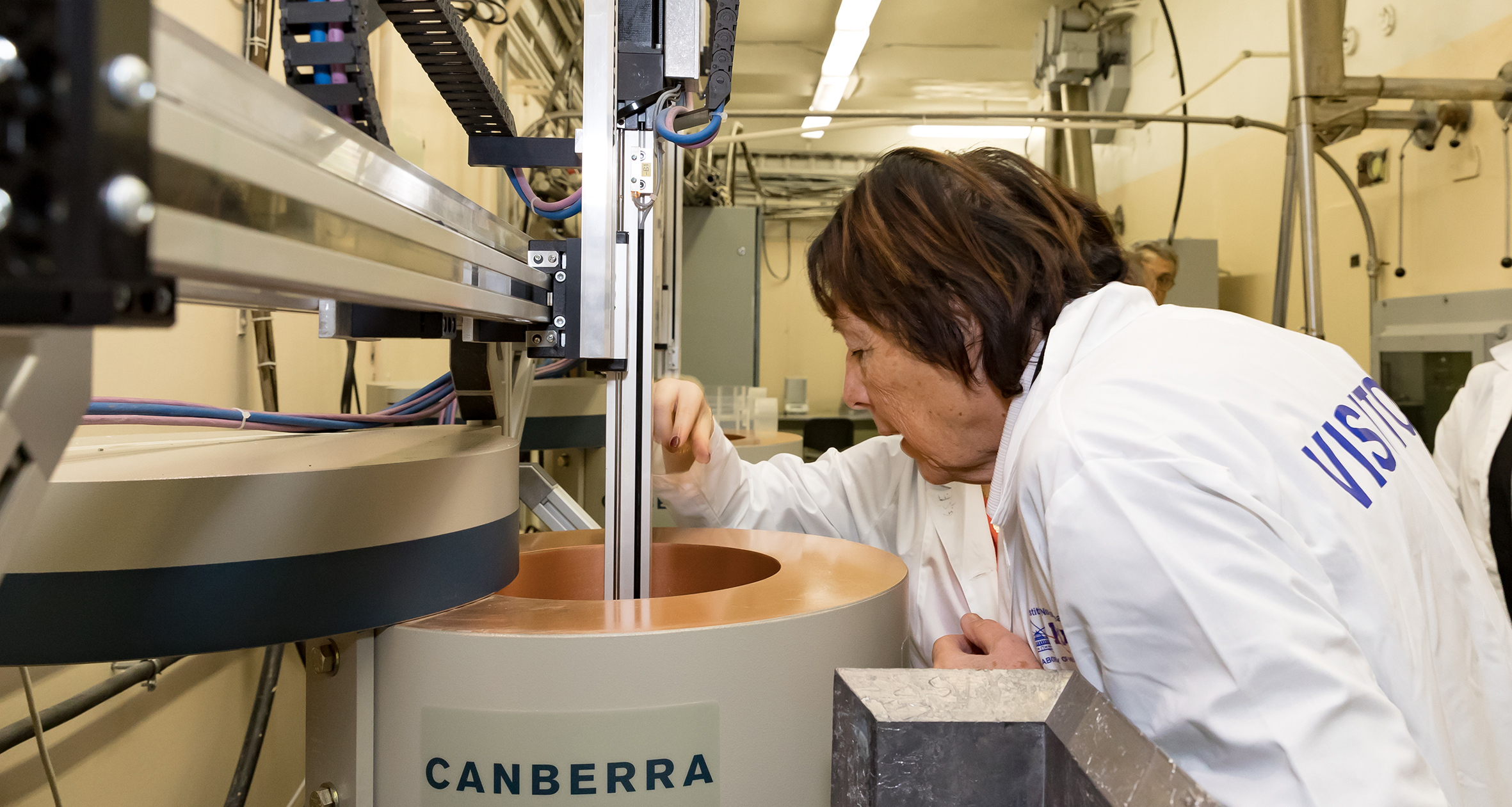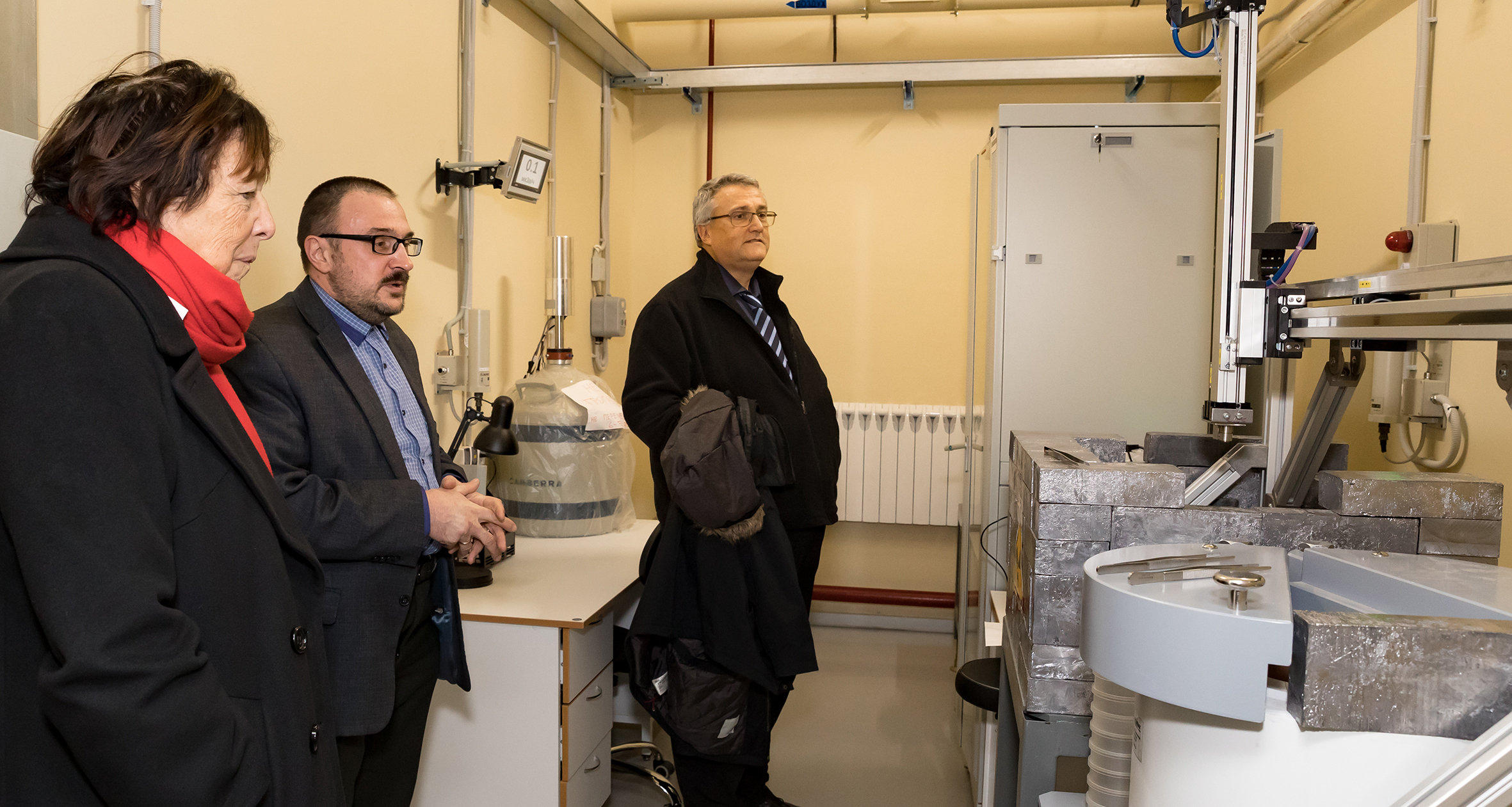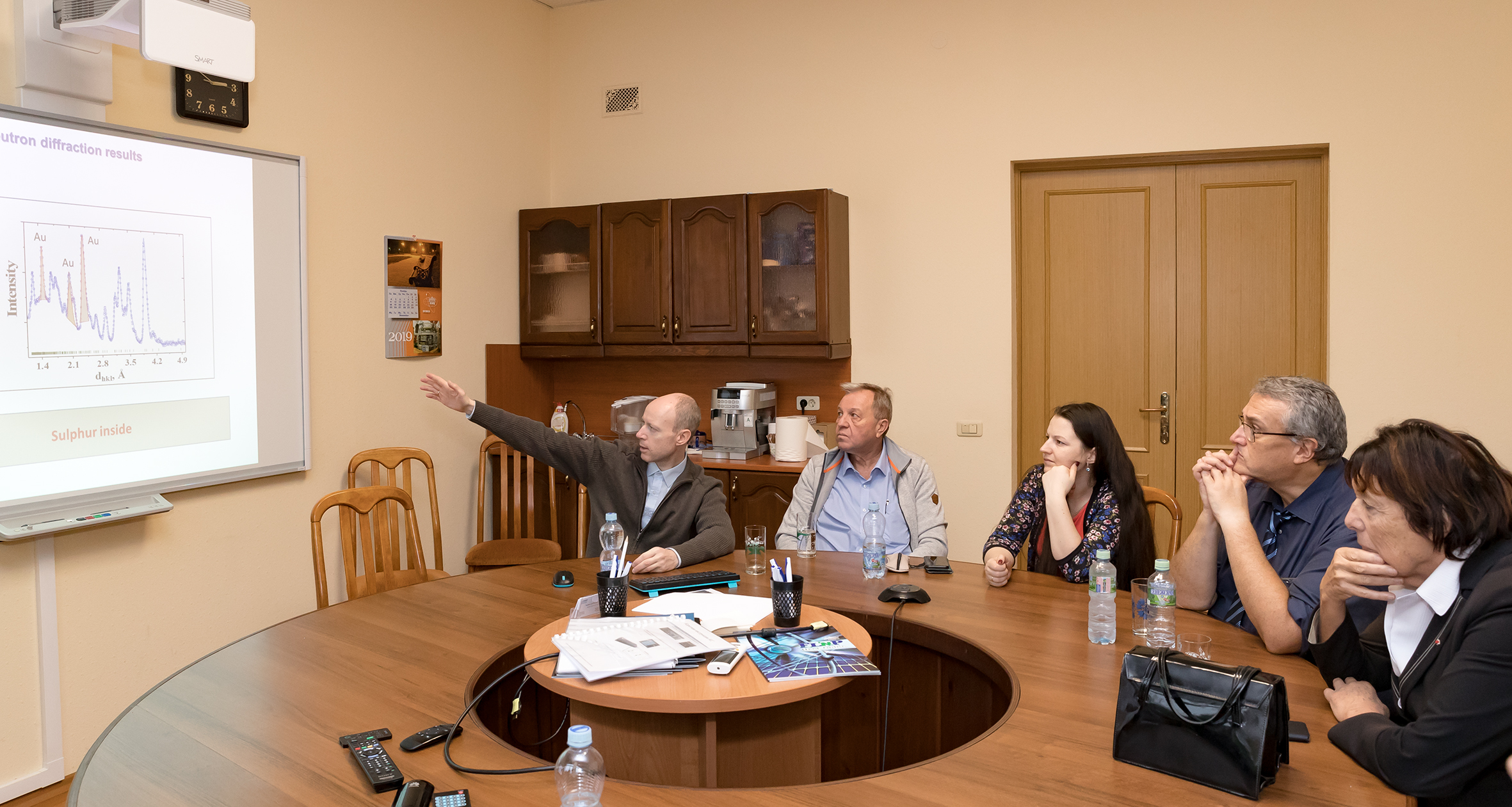Visit of Honorary Secretary of the French Academy of Sciences to JINR
News, 11 November 2019
On Saturday, 9 November 2019, an outstanding scientist and an organizer of international science, Academician and Honorary Secretary of the French Academy of Sciences Catherine Bréchignac visited JINR.
Mme Bréchignac in her trip to Dubna was accompanied by Dr Gael Moullec, Advisor on cooperation with Russia and the Eurasian region to the Academy of Sciences of France. JINR Director V. A. Matveev and JINR Vice-Director M. G. Itkis welcomed the French delegation and briefly introduced to the guests today’s JINR, its new projects and scientific results achieved since the last visit of Mme Bréchignac to Dubna, as well as progress in cooperation between JINR and French scientific organizations.
Considering the wishes of Mme Bréchignac, the programme of the visit included acquaintance with two objects of the JINR scientific infrastructure, namely the Superheavy Element Factory in the Laboratory of Nuclear Reactions and the IBR-2 research reactor in the Laboratory of Neutron Physics.
FLNR Director S. N. Dmitriev and FLNR Scientific Leader Yu. Ts. Oganessian guided a tour around the Superheavy Element Factory. They spoke about opportunities of the DC-280 cyclotron – the heart of the Factory – for research and new discoveries in the fields of heavy and exotic nuclei.
In the presentation about the IBR-2 opportunities made by FLNP Director V. N. Shvetsov and his colleagues, information about the experience of using the methods of neutron physics, including the x-ray fluorescent analysis, digital radiography, the neutron activation analysis for the study of cultural heritage was of special interest to Mme Bréchignac. In her opinion, such research methods and instruments that may be used at the FLNP facilities are of great interest to scientists of a wide range of scientific fields, including history, archaeology, palaeontology, and, moreover, they have considerable potential for international cooperation, including for JINR-France cooperation. I. A. Saprykina, a participating in the meeting researcher from the RAS Institute of Archaeology, with which FLNP has long been implementing a fascinating research programme, proved the relevance of the neutron physics methods in the study of cultural heritage.
At the conclusion of the visit, Mme Bréchignac said the following when commented on the prospects of cooperation between French scientists and JINR: “JINR and French research centres, such as GANIL, have longterm and strong scientific cooperation structured by agreements on heavy and exotic nuclei. This cooperation should go further. Another point is the cooperation on research on condensed matter physics and the new one on ancient materials from cultural heritage. This research has begun only a few years ago in Dubna on the initiative of Prof Shvetsov, and the aim of this visit is to get acquainted with the latest developments of the Frank Laboratory in this field.
I am not for the first time in Dubna; the last time I was here was at the beginning of the 2000s. I am very impressed by the Institute’s equipment and the way it has been upgraded since then. I was particularly impressed by the Flerov Laboratory conducting research on superheavy and exotic nuclei. The five beamlines constructed for experimental facilities for scientists coming from all around the world are very impressive.”
Photos by Elena Puzynina
